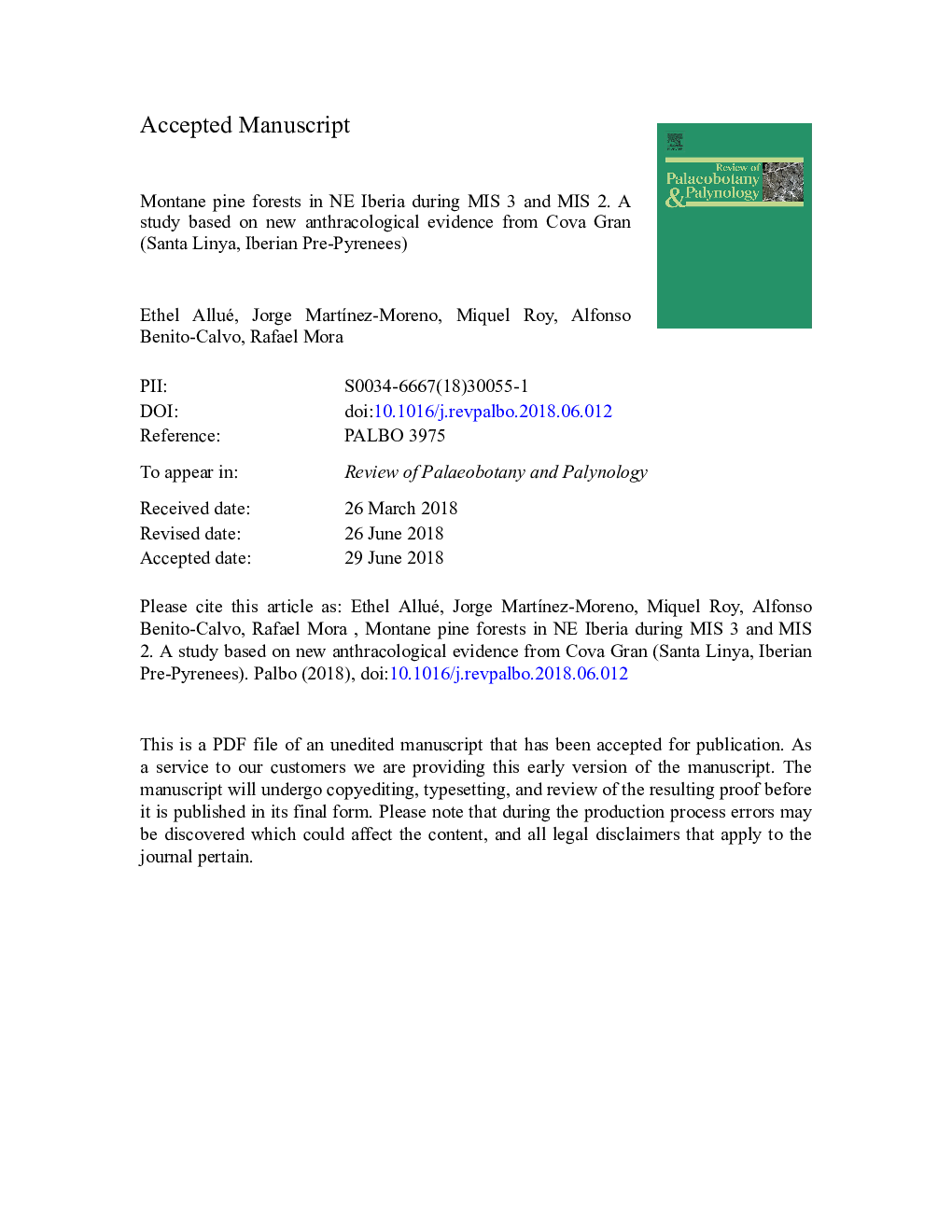| Article ID | Journal | Published Year | Pages | File Type |
|---|---|---|---|---|
| 8916579 | Review of Palaeobotany and Palynology | 2018 | 37 Pages |
Abstract
This study aims to characterize forest landscapes during the Late Middle Paleolithic (LMP), Early Upper Paleolithic (EUP) and Magdalenian of the NE Iberian Upper Pleistocene. In this paper we present the results of anthracological analyses from Cova Gran (Santa Linya, Spain). Results show a dominance of Pinus sylvestris type suggesting that despite the occurrence of climate changes throughout the Upper Pleistocene forest cover was continuous. The data, from Cova Gran is analyzed from a regional perspective through comparison with other sequences in the NE Iberia region. The comparison suggests a dominance of Pinus sylvestris type from the coast to the Pyrenees. Comparison with other sequences from Northern Iberia shows differences regarding the presence of cryophillous pines in some phases and a higher diversity and the presence of other plant communities. This contributes to the understanding of the local environmental differences according to the biogeographical setting of the sites. The present study also suggests that pines were available in NE Iberia throughout the Upper Pleistocene and was systematically used as the main source of firewood.
Related Topics
Physical Sciences and Engineering
Earth and Planetary Sciences
Palaeontology
Authors
Ethel Allué, Jorge MartÃnez-Moreno, Miquel Roy, Alfonso Benito-Calvo, Rafael Mora,
